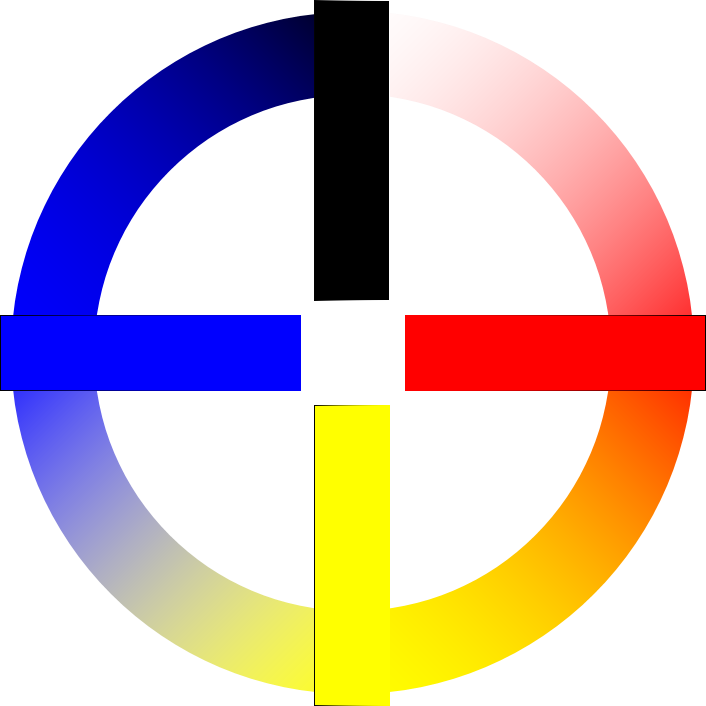Hybrid Humanoids — a new definition
In the fantasy RPG kind of world I envision, the offspring of the traditional co-species known as Humanoids have more distinct identities than simple being "half-" something.
I've come to a resolution that henceforth my writing in settings that are somewhat related to the Dungeons & Dragons kind of role playing games (RPGs) won't be using terms like "Half-Elf" and "Half-Orc". Those terms are very Human-centric, and that just seems like lazy writing to me. One example that comes to my mind where the offspring of two very different cultures have historically expressed a hybridized, yet unique, culture are the Métis people and the tensions of history and heritage that have helped to shape the Métis identity over time.
First of all, in trying to work with what are called "races" in D&D and other RPGs, I'm defining a broad species that I call "Humanoids". For simplicity, I'm assuming that "species" is defined in a classical (although debated) way where offspring is viable. Therefore, if an Elf and a Human are able to have a healthy child that itself can produce viable offspring, Elves and Human must be in the same species. Yet, Elves and Humans have distinct phenotypes and abilities. So, to explain how an Elf and Human can have a child, I've defined them as subspecies.
The following list is here on this website as a reference to some of the generators which use this schema. For more definition and discussion regarding the particulars of these subspecies, please visit my world of Pleiadia on World Anvil.
Humanoids
These are the subspecies that have been set up in this particular paradigm.
- Dwarves
- Elves
- Gnomes
- Halflings
- Humans
- Orcs
Hybrids
- Elf-Human: Duine (formerly "Half-Elf")
- Human-Orc: Orckind (formerly "Half-Orc")
- Halfling-Human: Menneske (Menn)
- Gnome-Halfling: Hobin (Hobbin, Hoblin)
- Dwarf-Halfling: Skelt
- Dwarf-Human: Dverger
- Elf-Dwarf: Ǎirén
- Elf-Orc: Ujin
- Dwarf-Orc: Duergar
- Dwarf-Gnome: Drunathi
- Halfling-Elf: Mion
- Elf-Gnome: Sachi (Saci)
- Gnome-Human: Nomen
- Halfling-Orc: Drekin
- Gnome-Orc: Nameless
Once we get into the practice of giving hybrid Humanoids names, this brings up a couple of important questions:
- Percentages (a.k.a. "Blood Quanta"): e.g. How much Orc blood does one have to be considered either Orc, Human, or Orckind?
- Hybrid-Hybrids: e.g. What do you call a Humanoid with a parentage of a Duine and a Skelt? Doesn't this just take us down a rabbit-hole of ever more names for hybridized fantasy species?
To address the first issue, it seems that one has to confront a couple of arbitrary social definitions invented over the centuries, mostly to control various people over time. In America, the "one-drop black" construct was invented to define anyone with any ancestry to African slaves was considered a "Negro" and thus the dominant culture had a way to control certain people who might have had the audacity to assert their basic human rights.
Conversely, "blood quanta" is the opposite policy—also just as fallacious and unscientific—used to control indigenous peoples native to the continent. To this day, one still has to "prove" they they have a certain percentage of "Indian blood" to a specificly recognized tribal nation in order to claim some kind of heritage or formal tribal affiliation, which is further compounded by the manipulations of the dominant white culture's control of treaties, reservation membership, formal recognition, and other historical means. This is done both to limit the number of obligations the U.S., Canadian and other governments must recognize and to limit the political power (i.e. votes) of indigenous peoples.
